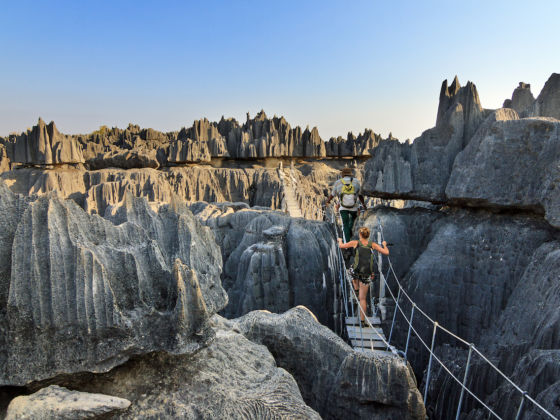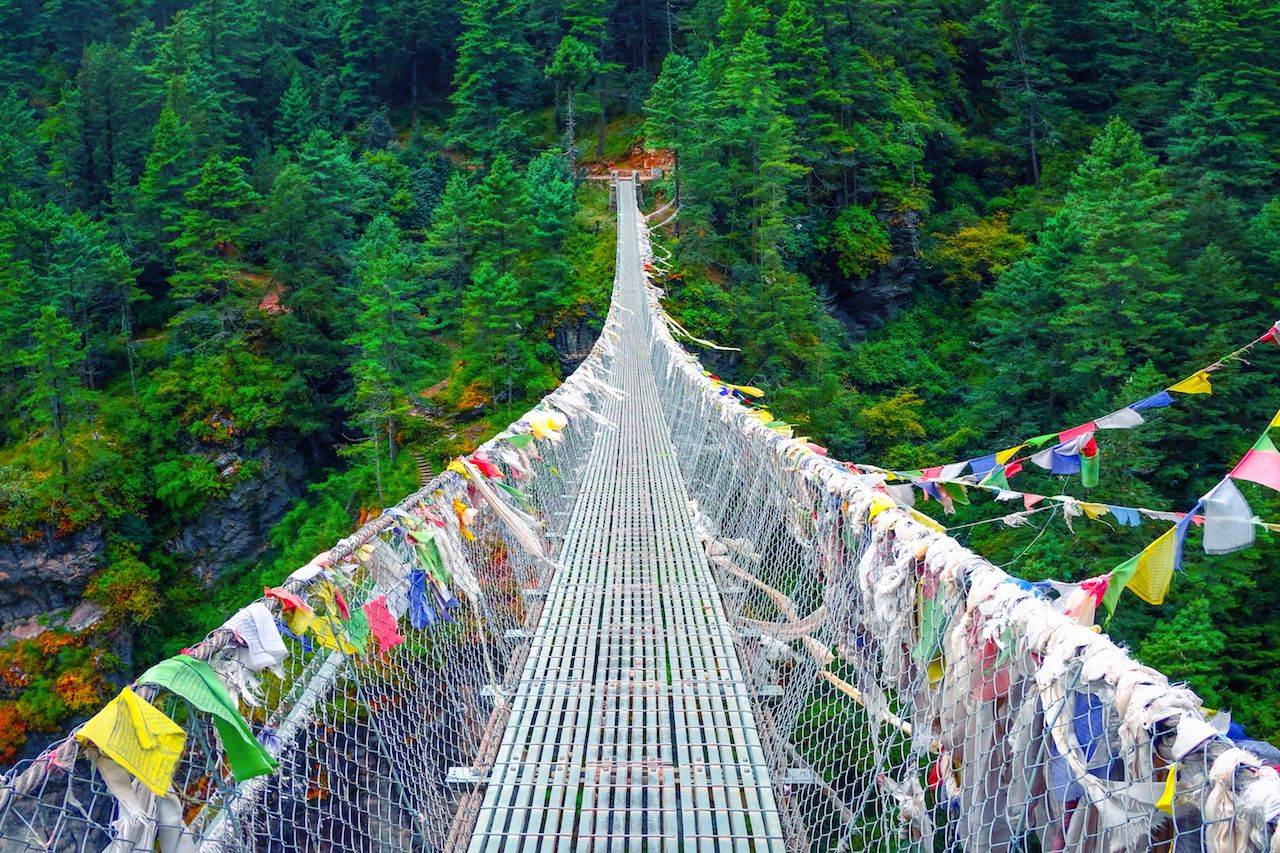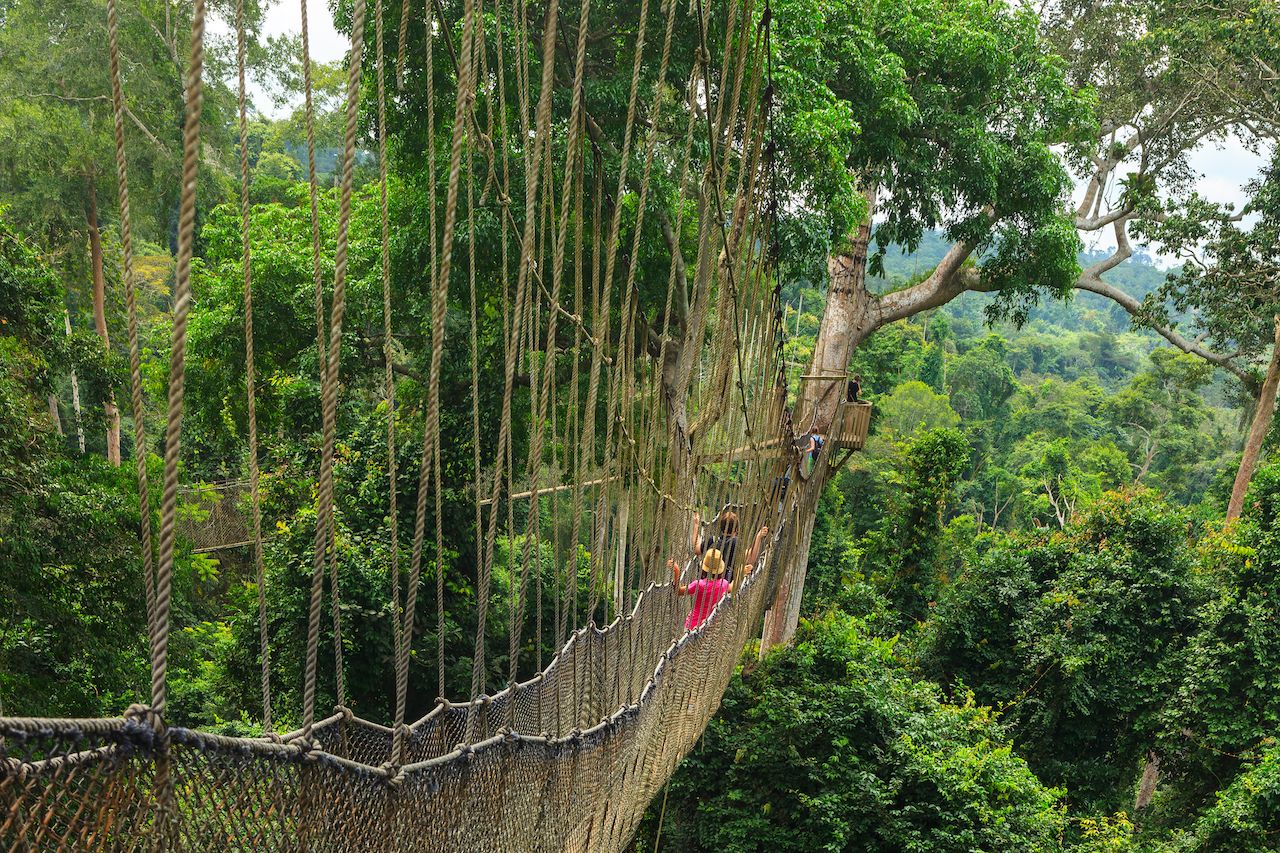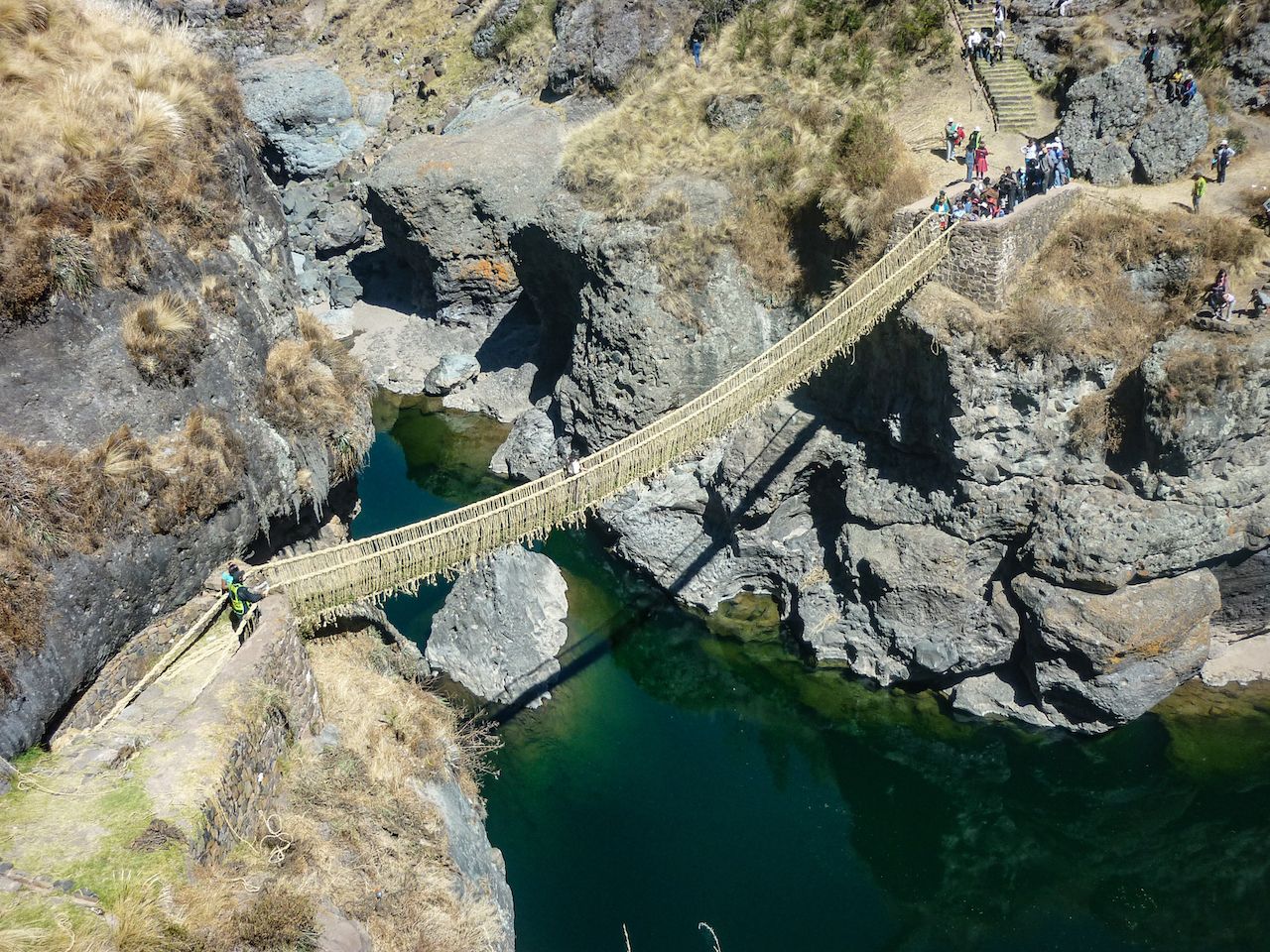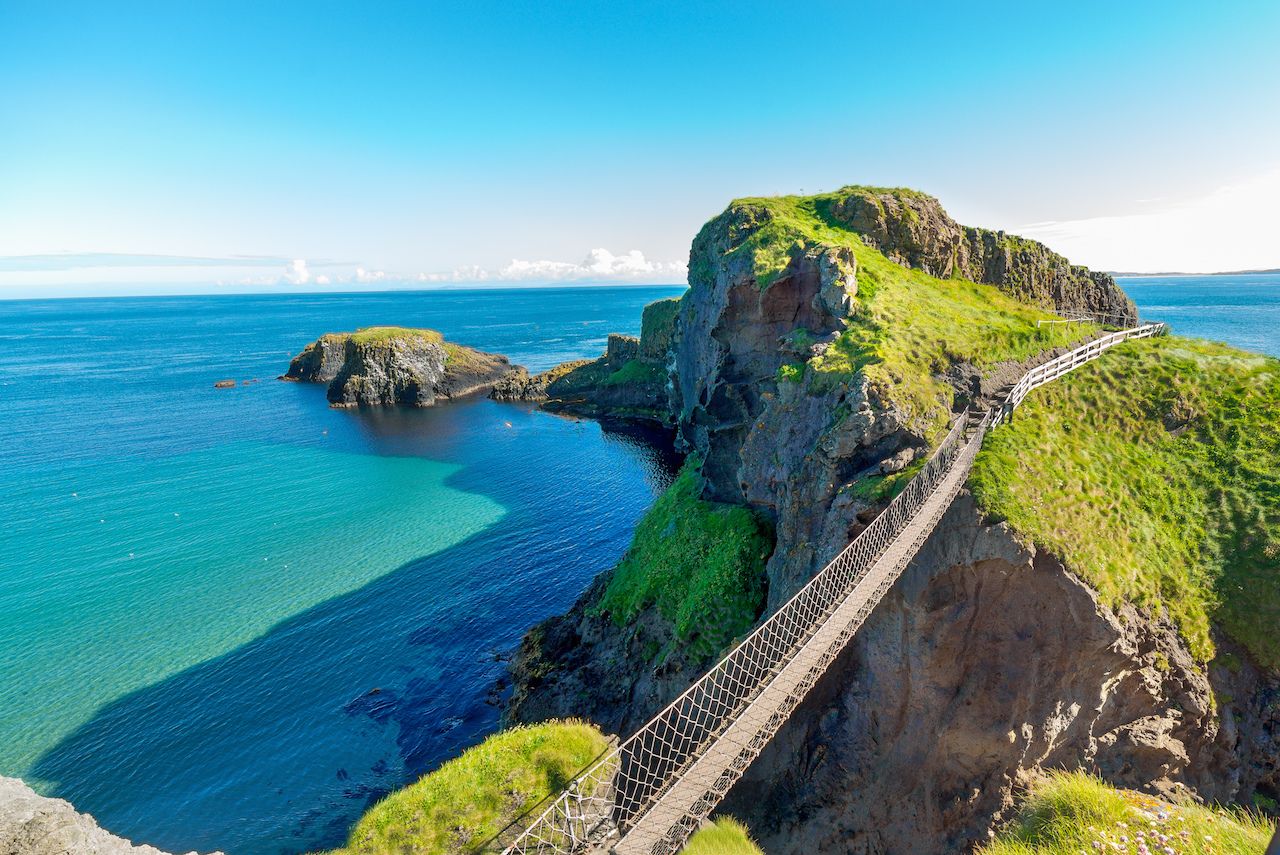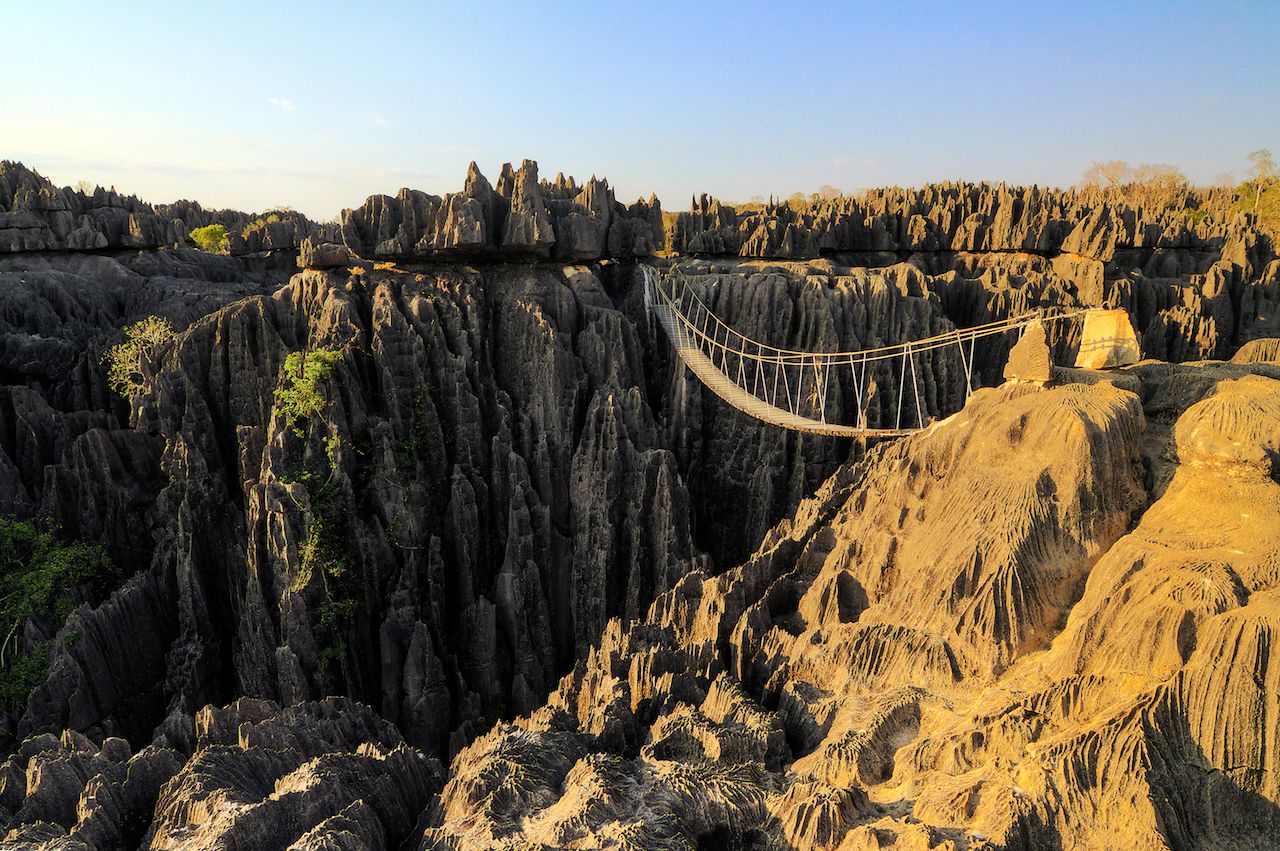While thrill-seeking is often associated with skydiving or bungee jumping, some of the scariest experiences can be had just by putting one foot in front of the other. From a stroll high up in the trees to a bridge made from only vines, here are nine of the world’s most perilous and spine-tingling footbridges.
1. Taman Negara Canopy Walk, Malaysia

Photo: ahau1969/Shutterstock
What started out as a way for biologists to get a tree-top view of their canopy-dwelling animal and plant subjects, has now become one of the best ways to experience the flora and fauna of the oldest rainforest in the world: Taman Negara. The Taman Negara Canopy Walk is a narrow, wooden path that leads you 530 meters (1738 feet) through dense greenery — the forest floor a heady 40 meters (130 feet) below — allowing intimate access to the megadiversity of Malaysia, which, in this rainforest, includes giant squirrels and a third of the world’s total bird species.
